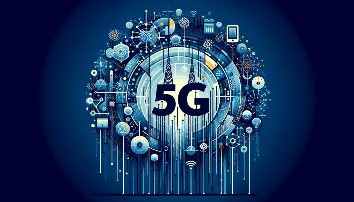
5G technology represents a significant advancement in mobile communication, not just in terms of speed and connectivity but also in enhancing security protocols.
As cyber threats become more sophisticated, the security measures associated with 5G are designed to address these challenges effectively. Here are some key aspects of enhanced security protocols in 5G technology:







### 1. **Advanced Encryption Standards**
– **Stronger Encryption**: 5G networks utilize more advanced encryption methods to protect data in transit. The use of algorithms such as AES (Advanced Encryption Standard) ensures that data remains secure from eavesdroppers and unauthorized access.
– **End-to-End Encryption**: By implementing end-to-end encryption, 5G networks can ensure that data is encrypted from the source all the way to the destination, significantly reducing the risk of interception.
### 2. **Improved Authentication Mechanisms**
– **Enhanced Authentication**: 5G introduces improved authentication mechanisms for users and devices. This includes mutual authentication, where both the user and the network verify each other’s identities before communication begins.
– **Identity Management**: 5G networks can leverage SIM cards and embedded SIMs (eSIMs) to ensure secure identity management. These technologies help prevent unauthorized devices from accessing the network.
### 3. **Network Slicing Security**
– **Isolated Network Slices**: 5G technology allows operators to create virtualized network slices tailored to specific applications or services. Each slice can have its own security policies and controls, isolating sensitive operations from less secure traffic.
– **Dynamic Security Policies**: Based on the specific requirements of each slice, security protocols can be dynamically adjusted, enabling more robust defenses where needed.
### 4. **Improved Threat Detection and Mitigation**
– **AI and Machine Learning**: 5G networks can leverage artificial intelligence and machine learning algorithms to detect abnormal behaviors and potential threats. This proactive approach is essential for identifying and mitigating security issues in real time.
– **Traffic Analysis**: Enhanced traffic monitoring capabilities allow network operators to analyze data patterns and identify anomalies that could signal a security breach.
### 5. **Secure Data Storage and Transmission**
– **Local Edge Computing**: With 5G’s implementation of edge computing, data can be processed closer to where it is generated, reducing latency and minimizing the amount of sensitive data that needs to be transmitted over the network. This helps decrease the risk of exposure.
– **Decentralized Storage**: By storing data in a decentralized manner (across multiple locations or servers), 5G can reduce the risk of a single point of failure, enhancing overall data security.
### 6. **Enhanced Privacy Protections**
– **User Data Protection**: 5G networks can implement policies that prioritize user privacy, ensuring that personal data is not collected or shared without consent.
– **Granular Access Controls**: 5G allows for more granular access controls, enabling operators and users to define who has access to specific data and services, thus further protecting user privacy.
### 7. **Zero Trust Security Models**
– **Adopting a Zero Trust Approach**: 5G encourages the adoption of a Zero Trust security model, where no device or user is trusted by default. Each request for access is validated based on numerous factors, including user identity, device security status, and network conditions.
### 8. **Collaboration with Global Security Standards**
– **Compliance with Standards**: 5G technology development involves close collaboration with international standards organizations to ensure compliance with the latest security protocols and best practices, enhancing the overall integrity of the network.
– **Regulatory Frameworks**: Operators are encouraged to comply with regulatory frameworks that mandate specific security measures, creating a more secure environment for users.
### 9. **Resilience Against Distributed Denial-of-Service (DDoS) Attacks**
– **Robust Network Design**: 5G networks are designed to better handle DDoS attacks by distributing workloads and automating traffic rerouting. This resilience helps maintain service availability during attacks.
### Conclusion
As 5G technology continues to evolve, security protocols are being enhanced to meet the growing challenges of cyber threats. By leveraging advanced encryption, improved authentication, network slicing, AI for threat detection, and privacy protections, 5G aims to create a safer environment for users and devices. These advancements are crucial as we move towards a more connected world with an increasing reliance on mobile communication for sensitive transactions and critical services.


Leave a Reply